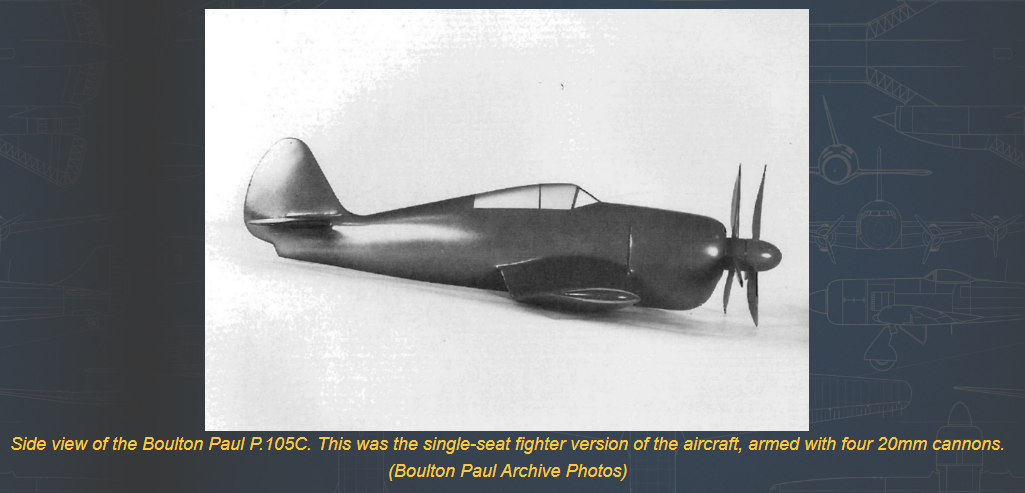blackkite
Don't laugh, don't cry, don't even curse, but.....
- Joined
- 31 May 2007
- Messages
- 8,597
- Reaction score
- 6,844
Hi!
https://plane-encyclopedia.com/ww2/boulton-paul-p-105-p-107/
"Late in the Second World War, the Royal Naval Air Arm began seeking out an aircraft design that would be able to fill both the fighter and bomber roles. Having one aircraft perform multiple roles would eliminate the specialization of carrier-borne aircraft needed to fill the fighter, dive bomber, and torpedo bomber roles. No official requirement was ever put out to build such an aircraft, but several companies had begun developing aircraft that would fit this role, which had become known as the “Strike Fighter”. Westland, Blackburn, Fairey and Boulton-Paul would all develop designs that correspond to the strike fighter role. Boulton-Paul’s aircraft design would be known as the P.105."
"The P.105 was meant to be a small, high-performing aircraft that could easily be converted to fill other roles, even carrier duties. To do so, it would use a unique idea. To fill the variety of carrier-borne roles, the P.105 would have modular cockpit and bomb bay sections. The interchangable modules included a torpedo-bomber (P.105A), reconnaissance aircraft (P.105B), fighter (P.105C) and dive-bomber (No designation given)."
https://plane-encyclopedia.com/ww2/boulton-paul-p-105-p-107/
"Late in the Second World War, the Royal Naval Air Arm began seeking out an aircraft design that would be able to fill both the fighter and bomber roles. Having one aircraft perform multiple roles would eliminate the specialization of carrier-borne aircraft needed to fill the fighter, dive bomber, and torpedo bomber roles. No official requirement was ever put out to build such an aircraft, but several companies had begun developing aircraft that would fit this role, which had become known as the “Strike Fighter”. Westland, Blackburn, Fairey and Boulton-Paul would all develop designs that correspond to the strike fighter role. Boulton-Paul’s aircraft design would be known as the P.105."
"The P.105 was meant to be a small, high-performing aircraft that could easily be converted to fill other roles, even carrier duties. To do so, it would use a unique idea. To fill the variety of carrier-borne roles, the P.105 would have modular cockpit and bomb bay sections. The interchangable modules included a torpedo-bomber (P.105A), reconnaissance aircraft (P.105B), fighter (P.105C) and dive-bomber (No designation given)."
Attachments
Last edited:








